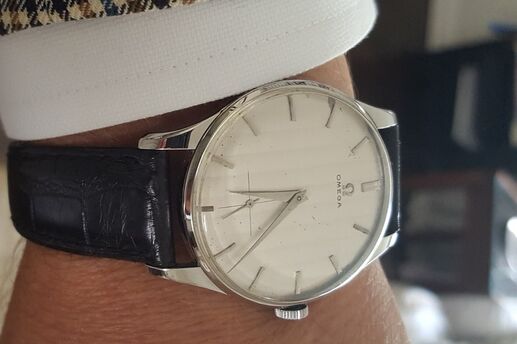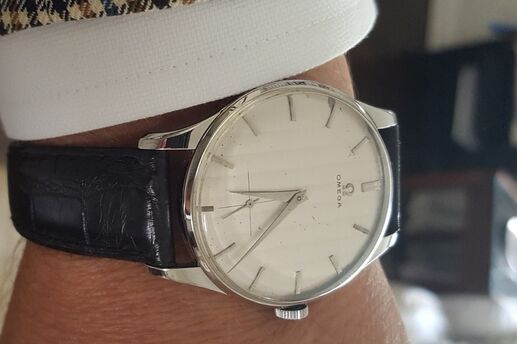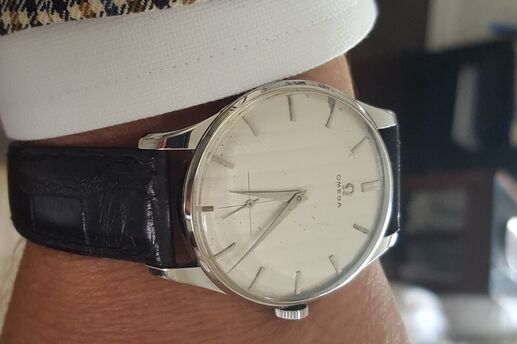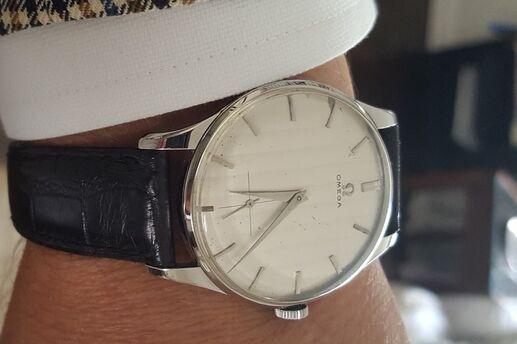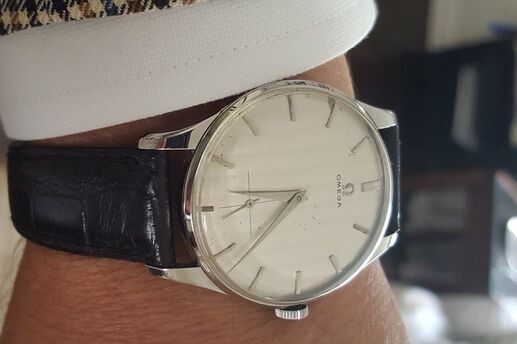Some shaving scenes in films should warn, "Don't try this at home." For the best razor experience, learn from these characters' mistakes.
In the same way you wouldn’t trust Ron Burgundy to educate you on the duties of an anchorman, you can’t necessarily count on movie characters to be good shaving mentors. In fact, some movie men make perfect role models for what not to do: They scrape when they should glide, sting when they should soothe and drive the razor north when they should roll south.
Health and beauty expert Kyan Douglas, best known as the grooming guru on Queer Eye for the Straight Guy and present host of TLC’s 10 Years Younger, took a sharp look at the shaving scenes in some popular flicks and shows us why they should be recut.
Mr. Blandings Builds His Dream House (1948)In Front of the Mirror:
Jim Blandings (Cary Grant) must battle for real estate in front of the bathroom mirror as his freshly showered wife (Myrna Loy) cuts in front and foils Grant’s attempt at achieving uninterrupted shaving.
The Wrong Cut:
Douglas concludes that a shaver needs to be able to focus on the task at face.
“There are times when I’m rushed or in a hurry,” says Douglas, “and those are the times I knick my Adam’s apple. And then those become the most inconvenient times -- because now you’re still late, and you’re also bleeding. So just give yourself the time to really respect your face. It’s delicate skin, your face. Take care of it.”
In the same way you wouldn’t trust Ron Burgundy to educate you on the duties of an anchorman, you can’t necessarily count on movie characters to be good shaving mentors. In fact, some movie men make perfect role models for what not to do: They scrape when they should glide, sting when they should soothe and drive the razor north when they should roll south.
North By Northwest (1959)
In Front of the Mirror:
In the men’s room of Chicago’s Union Station, Roger Thornhill (Cary Grant again) must shave to disguise his identity but only has access to a teeny women’s pink razor (the property of his romantic foil, Eva Marie Saint).
The Wrong Cut:
Sure, Grant had to make do with whatever kind of blade he could get; after all, he was on the run from the law, mistaken for a killer. But obviously, you should avoid using a woman’s razor on your face.
“Women often use those kinds of disposable razors,” notes Douglas. “I don’t know that ‘lady shavers’ -- if that’s what you want to call them -- are really designed to get the close kind of shave the way the men’s razors are. Plus, on a very practical level, you really shouldn’t be sharing razors with anybody -- it’s not sanitary. Things can definitely be transmitted, like warts. And because it can be a bloody situation, sharing razors has even been linked to transmission of Hepatitis C.”
As for the teeniness of that pink shaver, Douglas adds, “It’s not so much the size of the equipment, it’s really the quality.” And Douglas opts for a good multiblade razor.
The Graduate (1967)
In Front of the Mirror:
While attempting to scrape off some bristle (stroking the razor upward on his neck), Ben Braddock (Dustin Hoffman) gets a visit from his mom who basically asks him if he’s tomcatting around at night. Shocked at the question, Hoffman slits his finger on his safety razor.
The Wrong Cut:
“This is kind of an almost iconic image of a man shaving,” says Douglas. “He’s got his chin up, he’s lathered up, he’s going against the grain -- shaving up from the Adam’s apple. But here’s the deal: One is supposed to go with the grain.
“Now what if the hair on your neck grows in different directions, as it does with many men? Or around your chin, for example? Shaving up is perfect if your hair grows upward. If you get a 5 o’clock shadow very easily and you want to control that, rather than go against the grain, you can go sideways into the grain -- it’s not as traumatic on the skin. You’re less likely to get razor bumps and irritation.
“But the lesson is to really pay attention to the grain of your facial hair and do your best to shave with it,” says Douglas.
And the other lesson?
“Don’t talk about sex with your mother while you’re shaving.”
Home Alone(1990)
In Front of the Mirror:
In an iconic motion-picture moment, Kevin McCallister (Macaulay Culkin) indulges in bathroom grooming capped off by a splash of aftershave -- resulting in the sting heard round the world.
The Wrong Cut:
Forget that the 8-year-old in the movie never actually “shaves.” The takeaway involves the use of boozed-up post-shave elixirs (which can really smart a freshly shorn face).
Says Douglas: “It’s just a very old-school mentality about aftershave -- that stinging is good because it’s disinfecting. It should be used to soothe the skin.”
The Aviator (2004)
In Front of the Mirror:
Because he needs to emerge from seclusion, Howard Hughes (Leonardo DiCaprio) must finally shave off his ratty beard. Helping him perform the deed: Ava Gardner (Kate Beckinsale).
The Wrong Cut:
Based on our shave-with-the-grain rule, it would seem this scene gets it wrong, since Beckinsale slides the razor up DiCaprio’s neck, against the grain. But after careful inspection, Douglas concludes the scene actually got it right.
“Straight-blade professionals will often shave against the grain,” notes Douglas. “But only after they’ve shaved the face once with the grain. And it looks like that’s what she had done: There was just a little bit of shaving cream on his cheek, but the rest of his face had been shaved.”
Starsky & Hutch (2004)
In Front of the Mirror:
Ken Hutchinson (Owen Wilson) shaves in the police department men’s bathroom.
The Wrong Cut:
At first glance, it would seem Wilson has his technique wrong, holding his razor nearly full-on vertically. Were you to follow suit with a modern-day razor, you’d be gaffing.
But for this scene, Douglas blames Wilson’s equipment: the retro safety razor (the movie’s set in the ’70s). “With those old-school razors, it’s really like working with a straight blade,” explains Wilson. “The angle in which you hold it is really important. So I think the actor was holding the blade the way it actually needs to be held, so he didn’t cut himself.”
Douglas adds, “One of the things I really like about this scene is that Owen Wilson really seems to be taking his time -- taking small strokes, sort of like doing detail work. And that’s really great if you’re someone whose facial hair growth pattern goes in many different directions.”
Hancock (2008)
In Front of the Mirror:
About to emerge from prison to commit acts of super-heroism, John Hancock (Will Smith) first decides to clean up his act. He parks himself in front of his cell’s sink, applies shaving cream and shaves … using his fingernails.
The Wrong Cut:
Since we mere mortals can’t fairly evaluate the effectiveness of fingernails as razors, Douglas found another flaw.
“What struck me about
that scene is that he didn’t use any water,” says Douglas. “He just put the
cream on there and just … thwack. And in our
imaginary Shaving 101 lesson book, the first thing you talk about is applying
water to soften the beard. You should really first wash your face, or take a
shower, or splash water on your face for a minute or use a wet hot towel --
something that keeps moisture and heat on your beard long enough to moisten
that hair shaft.”


